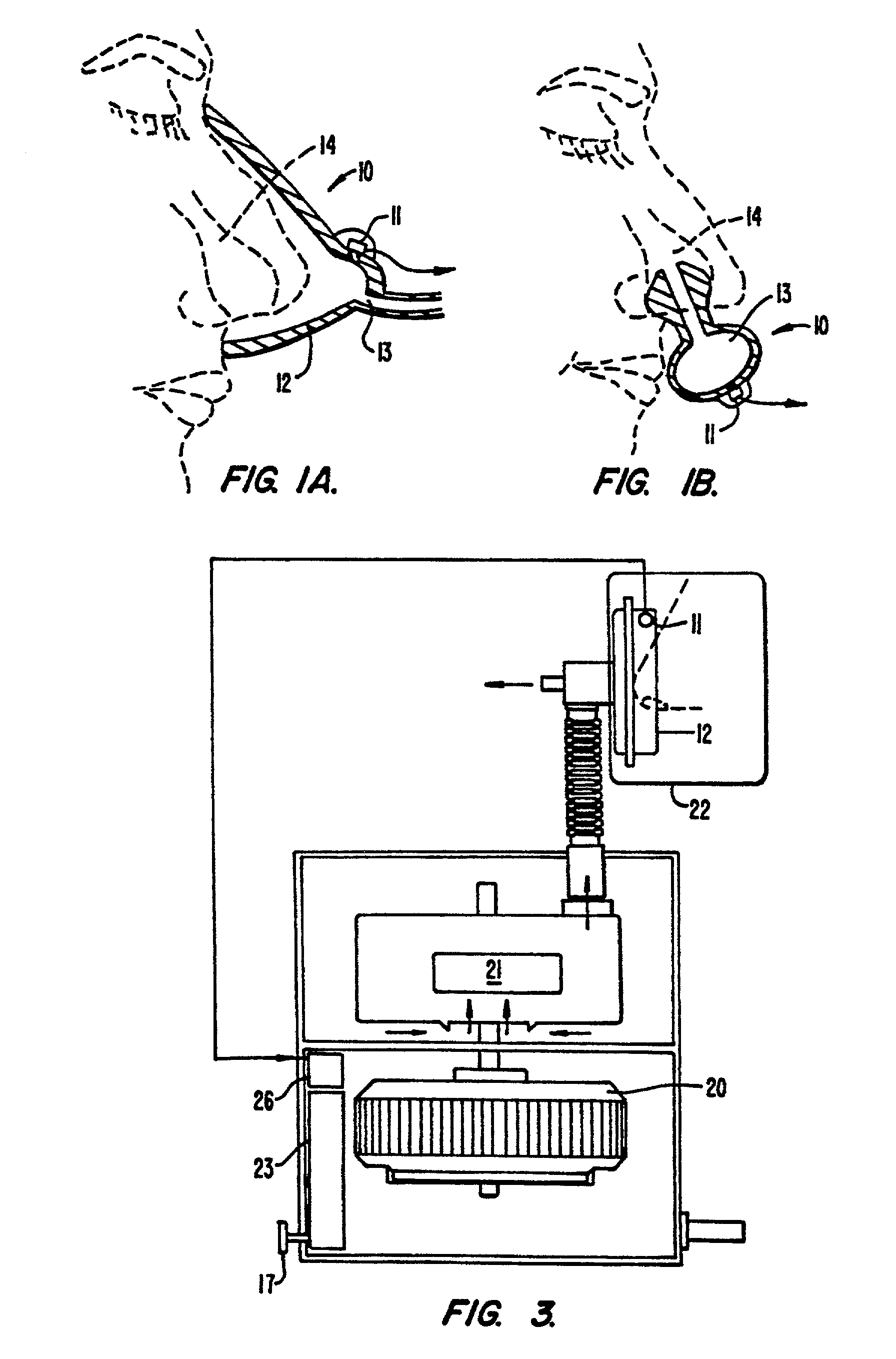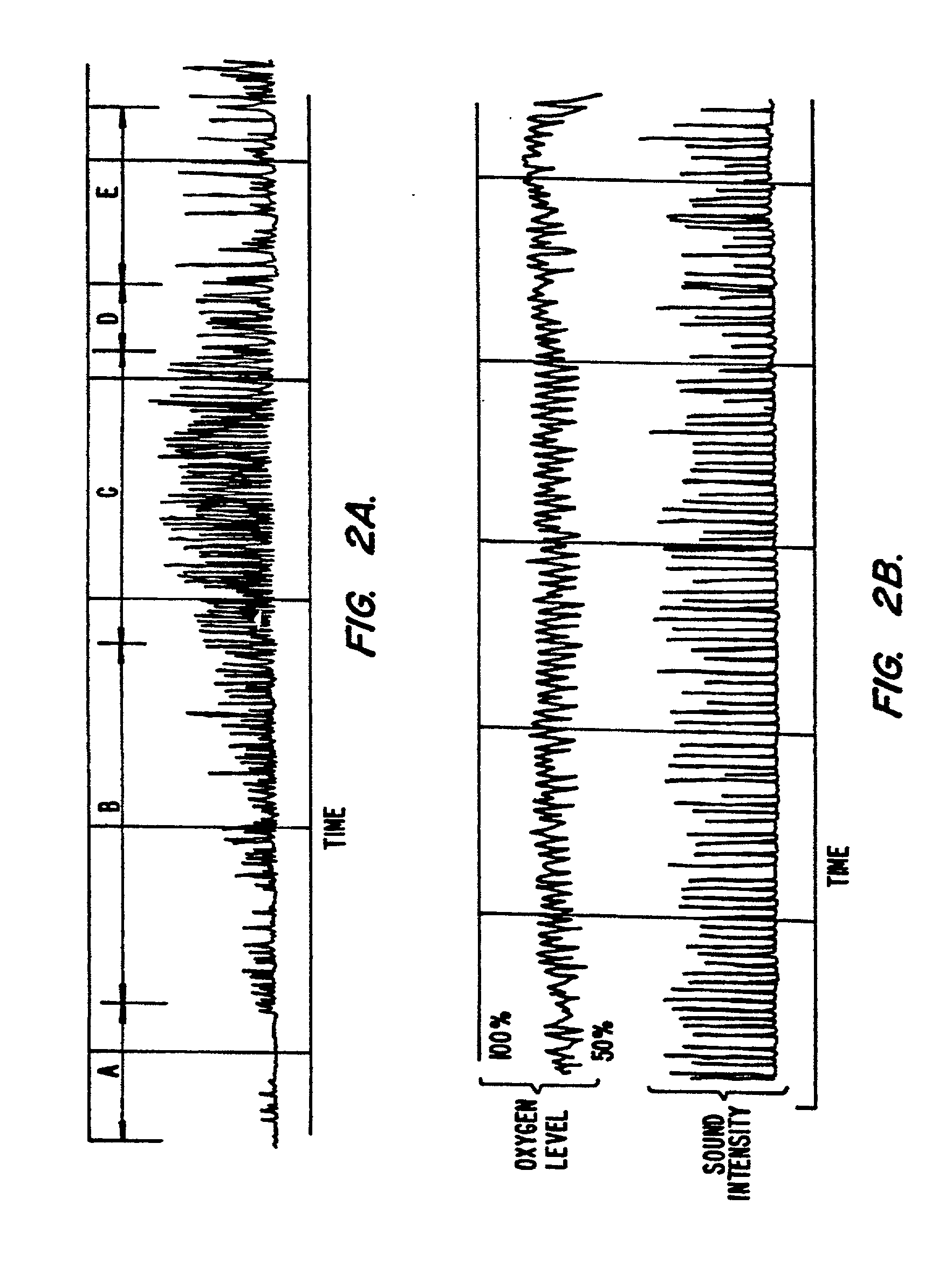Device for monitoring breathing during sleep and ramped control of CPAP treatment
- Summary
- Abstract
- Description
- Claims
- Application Information
AI Technical Summary
Benefits of technology
Problems solved by technology
Method used
Image
Examples
Embodiment Construction
[0055] FIG. 1a illustrates a snoring detection device 10 comprising a microphone 11, in sound communication with the container 12 of a nose mask. Air, being inhaled by the patient, enters the nasal passageways 14 through the opening 13 in the nose mask 12 and is exhaled in the reverse direction. As the airway extends from the source of snoring sounds within the patient's body, through the nasal passages 14 and out of the opening 13 in the nasal mask, the microphone 11 is ideally located to take advantage of the natural stethoscope formed by the enclosed airway. Hence the snoring and breathing sounds are focused and concentrated by this arrangement. Alternatively, the microphone 11 may be located within, or attached externally of, a nasal prong device as illustrated in FIG. 1b. The detection device 10 can be used in a diagnostic device or a feedback control. In the case of the detection device 10 being used in diagnostic equipment there is connected to the microphone 11 an electronic...
PUM
 Login to View More
Login to View More Abstract
Description
Claims
Application Information
 Login to View More
Login to View More - R&D
- Intellectual Property
- Life Sciences
- Materials
- Tech Scout
- Unparalleled Data Quality
- Higher Quality Content
- 60% Fewer Hallucinations
Browse by: Latest US Patents, China's latest patents, Technical Efficacy Thesaurus, Application Domain, Technology Topic, Popular Technical Reports.
© 2025 PatSnap. All rights reserved.Legal|Privacy policy|Modern Slavery Act Transparency Statement|Sitemap|About US| Contact US: help@patsnap.com



